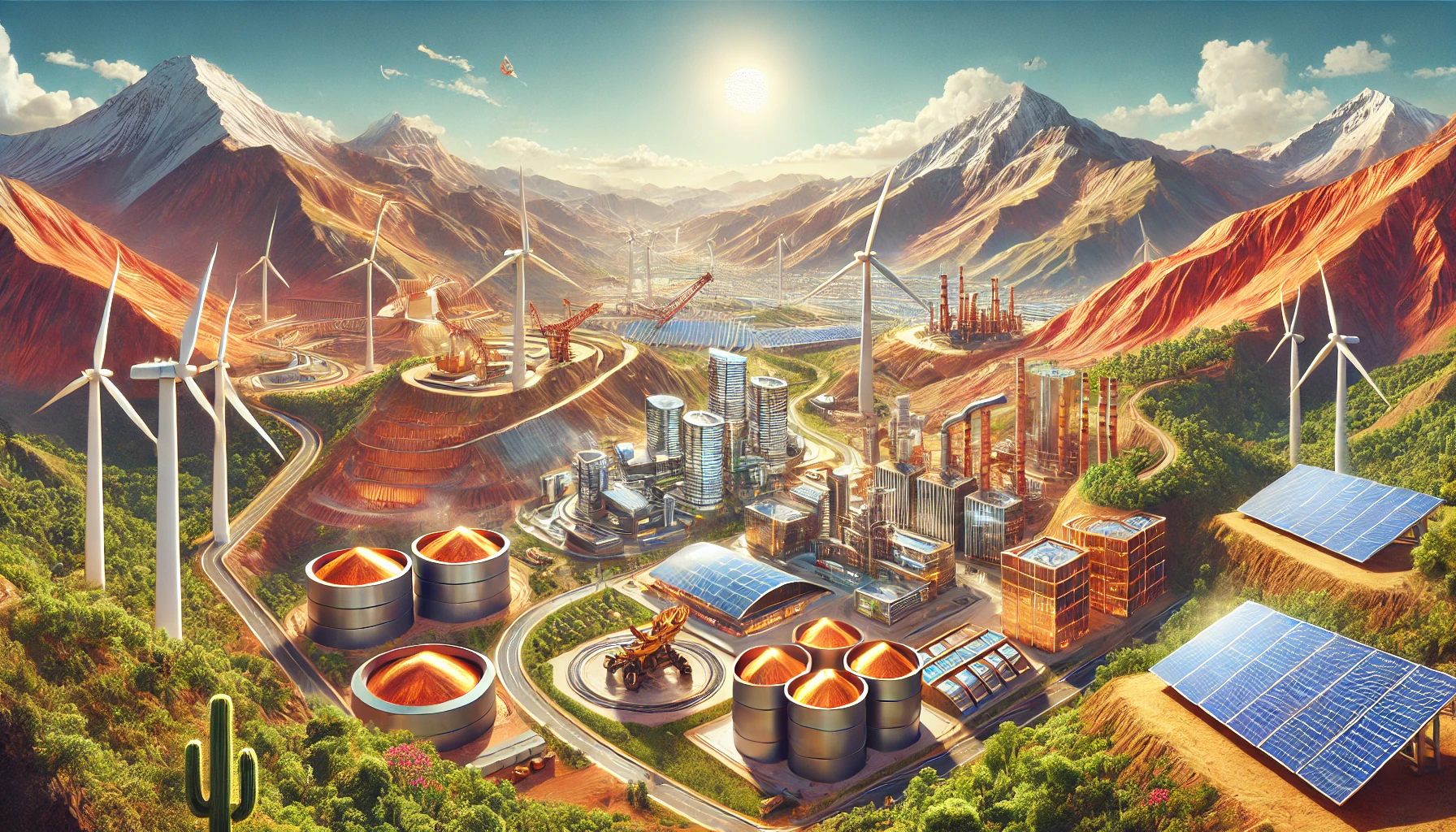A recent report from the World Bank’s Development Research Group and the Macroeconomics, Trade, and Investment Global Practice explores Peru’s long-term growth prospects, with a particular focus on how the country can leverage the global green transition and implement necessary reforms to become a high-income nation. According to the report, Peru’s potential GDP growth is projected to decline gradually, from 2.1% in 2024 to around 1.7% over the next two decades, primarily due to demographic changes and a lack of substantial reforms. Under a business-as-usual scenario, this slowdown means it would take more than half a century for Peru to reach high-income status. However, the report presents alternative scenarios in which moderate and ambitious reforms, combined with global trends such as the rising demand for copper, could accelerate this trajectory significantly, allowing the country to achieve high-income status by as early as 2042.
Past Growth Success and Current Slowdown
Peru’s recent economic performance has been strong, particularly during the post-1990 period when the country achieved robust growth, largely fueled by favorable external conditions and a commodities boom. Between 2002 and 2019, Peru experienced an average annual growth rate of 5.1%, significantly higher than the 2.7% average in Latin America. This period of rapid economic expansion allowed Peru to double its per capita income, achieving upper-middle-income status by 2008. The country benefited from good macroeconomic policies and political stability, and its status as one of the world’s leading copper producers bolstered private investment, especially in large-scale mining projects. However, by 2014, economic growth had slowed to 3%, due to the end of the commodity supercycle and the absence of significant new economic reforms. The report emphasizes that, without new growth drivers, Peru’s future prospects will be limited, and maintaining its current growth trend of around 2.5% will not be enough to achieve high-income status in the near future.
The Global Green Transition: A Key Opportunity
The report explores two key avenues for accelerating Peru’s growth: ambitious reforms in the non-resource sector and capitalizing on the global green transition. The global push toward clean energy technologies has led to increased demand for minerals like copper, which are essential for renewable energy infrastructure and electric vehicles. As the second-largest copper producer globally, Peru stands to benefit greatly from this surge in demand. Under a scenario where Peru maximizes its copper output through better exploration, improved mining technology, and reinvestment of copper windfalls, the country’s baseline growth could rise to 3.1% by 2035. This scenario assumes that copper prices will remain elevated due to global net-zero emissions targets, which would drive demand for cleaner technologies that depend on copper. If Peru implements the necessary reforms in tandem with this global trend, the country could see its average annual growth rate reach 5%, enabling it to achieve high-income status by 2042.
Reforms to Unlock Peru’s Growth Potential
To fully take advantage of this opportunity, the report stresses the importance of implementing wide-ranging reforms aimed at boosting productivity, human capital, and investment rates. Total factor productivity (TFP) growth, which has been a weak point in Peru’s economy, must be enhanced through innovation, improved education systems, market efficiency, and better infrastructure. The report identifies that Peru underperforms in key areas such as innovation and infrastructure, especially compared to its peers in the Latin American region and other upper-middle-income countries. Addressing these gaps is crucial for the country to sustain higher levels of TFP growth. Reforms targeting education, market efficiency, and institutional improvements are also vital to ensuring long-term productivity gains.
Demographic Challenges and the Need for Policy Adjustments
Moreover, demographic factors, particularly a shrinking labor force, pose significant challenges to Peru’s future growth. Population growth has been declining for decades, and this trend is expected to continue. This demographic shift will reduce the size of the workforce, directly impacting GDP growth. The report suggests that policies aimed at increasing labor force participation, particularly among women and older workers, could help offset some of the negative effects of the declining population. Additionally, improving the quality of education and healthcare for younger generations is essential for enhancing human capital, which will be a key driver of future growth.
A Path to High-Income Status by 2042
The report concludes that while Peru’s current growth trajectory is not sufficient to achieve high-income status within the next few decades, there are clear paths forward that could accelerate this process. By embracing the global green transition and implementing ambitious reforms, Peru could significantly improve its long-term growth prospects. The global demand for copper, driven by the transition to cleaner energy sources, offers a unique opportunity for the country to boost its economic performance. However, realizing this potential will require substantial reforms, particularly in the areas of productivity, human capital development, and institutional stability. If Peru can successfully combine the benefits of its natural resource wealth with domestic reforms aimed at enhancing competitiveness and sustainability, it has the potential to achieve high-income status by 2042. The challenge now lies in creating the right policy environment to support this ambitious vision for the future.











